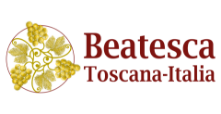Sant’Antimo Abbey: A legend among the vineyards of Brunello
The second stop on our journey takes us to a real gem of Romanesque architecture located in the heart of the Montalcino territory. Evidently, the undisputed home of good wine, which is expressed here in Sant 'Antimo DOC white wine and red, and the most famous and ancient Vin Santo Occhio Di Pernice, and which also contains many other secrets to reveal. Beatesca.com will tell you the story of the Sant'Antimo Abbey.
(more…)
Montalcino From Capital of the Republic of Siena to World capital of wine
It was the year 1555 when Montalcino, because of its unique structure, became the last bastion of republican freedom in Italy.
In fact, starting precisely in that year, Montalcino became the capital of the Republic of Siena until 1559 when the keys of the city were passed from the French state to the Spanish state. For the city, that moment represented the end of a great ordeal which saw it as "prisoner" of thousands and thousands of soldiers from Spain, France and Germany for over four centuries.
(more…)
The Harvest of a precious nectar: Brunello
Tuscany has a winemaking tradition that goes back to the Etruscan period, keeping this region at the top of enology and winemaking. The rolling hillsides of Tuscany provide an ideal setting for grapevines and the growth of important grape varieties. The indisputable "king" of this region is certainly the autochthonous Sangiovese varietal with which Brunello and Rosso di Montalcino are made. This varietal is not so easy to cultivate because of its medium-late maturation and its need for ideal sun exposure, microclimate and altitude.
(more…)
And then we went out to see the stars..
In the year of the 750th anniversary of the birth of Dante Alighieri, who is forever remembered as a great poet, with his Divine Comedy and for deeply intriguing the genius Galileo, leading him to hold two memorable lessons on the geography and structure of Dante's Inferno at the Ancient Florentine Academy founded by the Medici family in 1462 from which emerged the relevant scaling laws and the first study of material properties.
(more…)
Pienza, the Utopian City
The town of Pienza was founded by Enea Silvio Piccolomini, born on 18 October 1405 to a noble Sienese Family, which had over the years fallen on hard times, and for political reasons fled Siena to seek refuge in the city of Corsignano, in Val D'Orcia.
Enea was born in this small village where there was a small Romanesque Church and a Praetorian Place. Once Enea reached adulthood he moved to the city of Siena where he began his law studies, thanks to which he found his first job as a lawyer for Cardinal Capranica, who brought him to Basel. It was in this new role that his Repulican personality came to light, and from there he began a diplomatic career that took him around Europe, coming into contact with very different cultures and civilizations.
(more…)
San Giovanni D’Asso Treasure: by the discovery of the treasure of the Goths to the Holy Valley
The municipality of San Giovanni d'Asso can be defined as the natural border between the Valdichiana and the Maremma areas. Located in the southern part of the province of Siena, about 15 minutes from Montalcino, it is characterized by urban settlements and architectural works of art, which perfectly blend into the natural surrounding environment of prominent farm homes and Romanesque churches surrounded by uninterrupted rows of Brunello and Rosso di Montalcino vineyards.
(more…)
The Noeplatonic Academy of Lorenzo the Magnificent
The Platonic Academy in Florence was a driving force of Neoplatonism during the Renaissance period.
The Platonic Academy was founded in Florence, Villa Medici at Careggi, in 1462 by Marsilio Ficino, following the orders of Cosimo de Medici. A group of philosophers, writers, and artists worked together to reopen the ancient Athenian Academy of Plato. Among the leading proponents of the Neoplatonic academy in addition to Ficino, were
Pico della Mirandola, Poliziano, Nicholas Cusano, Leon Battista Alberti, Cristoforo Landino, and the most important members of the Medici family, Giuliano de Medici and Lorenzo the Magnificent.
(more…)
The Hot Springs of Val D’Orcia: parking areas, conceived and designed already in Roman times, where to relax body and mind
Bagno Vignoni - Bagni di San Filippo - San Casciano dei Bagni - Terme di Petriolo
Bagno Vignoni is a small hamlet part of the municipality of San Quirico d'Orcia, in the province of Siena, less than 20 km from Montalcino.
The villiage is in the heart of Tuscany, in the Natural Park of Val d'Orcia and is one of the most famous spas in the area. These natural hot springs, which attract many people, have been used since the time of the Romans for thermal purposes, thanks to its proximity to Via Francigena, which was the main artery for the pilgrimage to Rome.
(more…)
